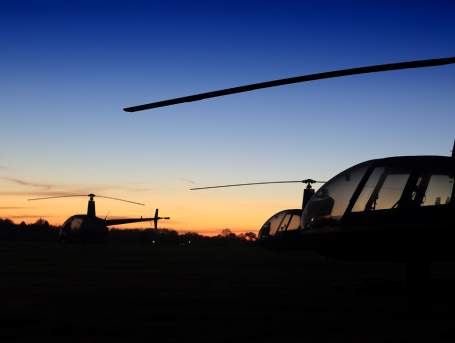To fly as Pilot in Command at night, with or without passengers, a helicopter pilot must hold a helicopter Night Rating. Additionally, if you plan on gaining a Commercial Pilot Licence (H), a Night Rating is a prerequisite for the issue of a CPL(H) licence.
The Night Rating can be completed in a Robinson R22 or R44 helicopter. Once completed it allows a pilot to fly any helicopter during official night (defined as the period between 30 minutes after sunset and 30 minutes before sunrise).
The completion of the Night Rating consists of:
- Five hours ground school instruction
- 10 hours of dual instrument flying
- Five hours of night flying, including five solo circuits with take-off and landings.
- The Rating must be completed within six months
Once the Night Rating is completed, the pilot is able to fly a suitably equipped helicopter at night.

